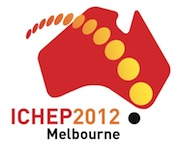Speaker
Dr
Jun Kameda
(ICRR, University of Tokyo (JP))
Description
We present recent results of the search for baryon number violating phenomena predicted by GUTs in Super-Kamiokande covering nucleon decay and neutron-antineutron oscillation.
Grand Unified Theories (GUTs) seek to unify the strong and electroweak forces, and a unique prediction of the GUTs is baryon number violation. Two quarks in a nucleon can transform into a lepton and an antiquark resulting in a lepton plus meson final state.
Super-Kamiokande (SK) is ring imaging water Cherenkov detector, containing 50 ktons of ultra-pure water, located in Kamioka-town in Gifu prefecture, Japan.
The Super-Kamiokande experiment had started obvservation in 1996, and we collected data in four periods:SK-I (91.7kton year exposure), II (49.2 kton yr), III (31.9kton yr) and IV (on-going).
We present the results on search for $p \rihgtarrow e^{+}+\pi^0$, $p \rihgtarrow \mu^{+}+\pi^0$, and $p \rihgtarrow \nu +\K^+$ based on SK-I to SK-IV data (219.8 kton yr exposure).
The other nucleon decay modes to meson plus anti-leptons are also presented based on SK-I, SK-I+II, or SK-I+II+III data.
Another possibility allowed by some of GUTs and Super Symmetric models is that neutron spontaneously changes to antineutron (called neutron-antineutron oscillation).
We plan to present the final result of neutron-antineutron oscillation search in SK-I.
Author
Dr
Jun Kameda
(ICRR, University of Tokyo (JP))
